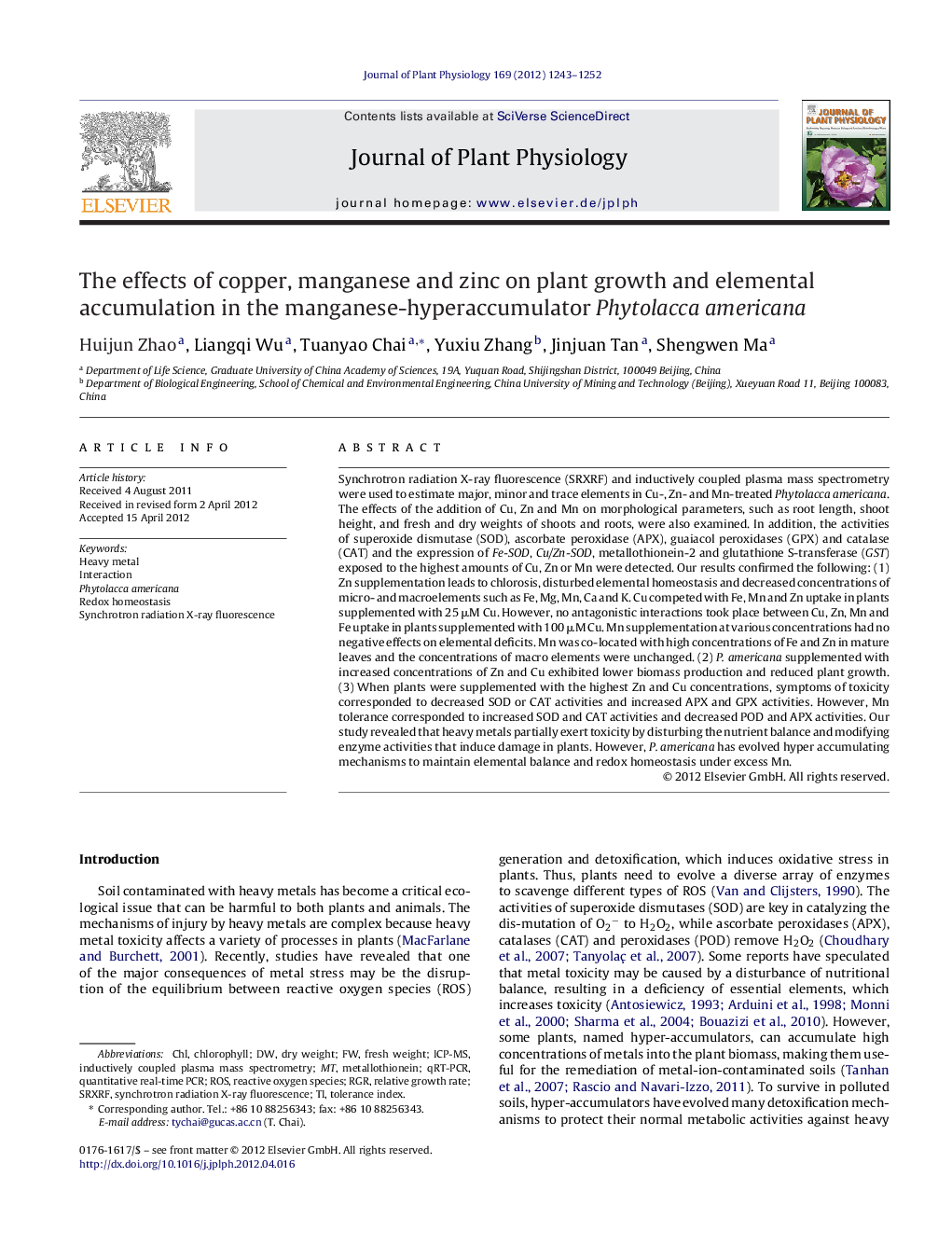| کد مقاله | کد نشریه | سال انتشار | مقاله انگلیسی | نسخه تمام متن |
|---|---|---|---|---|
| 2056082 | 1075801 | 2012 | 10 صفحه PDF | دانلود رایگان |

Synchrotron radiation X-ray fluorescence (SRXRF) and inductively coupled plasma mass spectrometry were used to estimate major, minor and trace elements in Cu-, Zn- and Mn-treated Phytolacca americana. The effects of the addition of Cu, Zn and Mn on morphological parameters, such as root length, shoot height, and fresh and dry weights of shoots and roots, were also examined. In addition, the activities of superoxide dismutase (SOD), ascorbate peroxidase (APX), guaiacol peroxidases (GPX) and catalase (CAT) and the expression of Fe-SOD, Cu/Zn-SOD, metallothionein-2 and glutathione S-transferase (GST) exposed to the highest amounts of Cu, Zn or Mn were detected. Our results confirmed the following: (1) Zn supplementation leads to chlorosis, disturbed elemental homeostasis and decreased concentrations of micro- and macroelements such as Fe, Mg, Mn, Ca and K. Cu competed with Fe, Mn and Zn uptake in plants supplemented with 25 μM Cu. However, no antagonistic interactions took place between Cu, Zn, Mn and Fe uptake in plants supplemented with 100 μM Cu. Mn supplementation at various concentrations had no negative effects on elemental deficits. Mn was co-located with high concentrations of Fe and Zn in mature leaves and the concentrations of macro elements were unchanged. (2) P. americana supplemented with increased concentrations of Zn and Cu exhibited lower biomass production and reduced plant growth. (3) When plants were supplemented with the highest Zn and Cu concentrations, symptoms of toxicity corresponded to decreased SOD or CAT activities and increased APX and GPX activities. However, Mn tolerance corresponded to increased SOD and CAT activities and decreased POD and APX activities. Our study revealed that heavy metals partially exert toxicity by disturbing the nutrient balance and modifying enzyme activities that induce damage in plants. However, P. americana has evolved hyper accumulating mechanisms to maintain elemental balance and redox homeostasis under excess Mn.
Journal: Journal of Plant Physiology - Volume 169, Issue 13, 1 September 2012, Pages 1243–1252